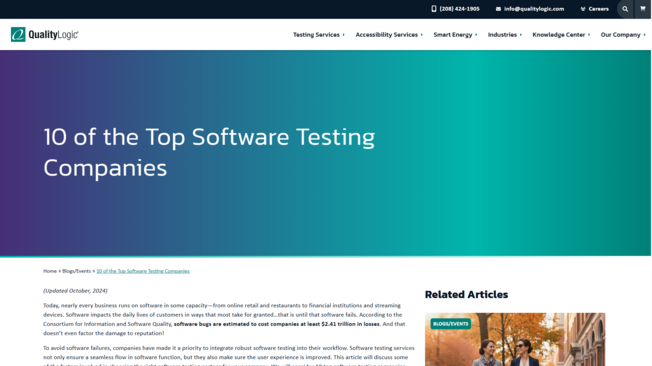
As a content writer, you surely know that the aim of the game is knowing your audience and crafting your message in a way that strikes a chord. If you are like many other writers out there, the idea of writing content for a B2B crowd can seem like a tough and intimidating task 123 hp com laserjet.
However, throughout all the efforts in trying to spell out your expertise to “the suits,” one of the biggest mistakes a writer can make is forgetting that businesses are made up of people. None of whom probably care to read a robotic piece of content that bores them to tears.
B2B content writing requires a particular touch. You can have the most profound insight in the industry, but if you don’t know how to phrase your thoughts in a captivating way that engages, educates, explains, inspires, and prompts action, most people won’t even bother with it.
So, how can you write a piece of content that appeals to an executive audience with a healthy dose of zing and pep? Let’s dive in.
Base Topics Around the Important Questions Being Asked

Photo by Ken Treloar on Unsplash
In most cases, B2B readers can tell whether or not a piece of content will sound robotic based on the title alone, especially if it’s full of jargon and has been covered a million times over. These days, posts with titles like “Ways to Streamline Your Website Conversions” or “How to Improve Efficiency in the Workplace” are super generic and sound like they came from an online content generator (a robot). This is perhaps the easiest way to bore a crowd.
If you want B2B audiences to tune into your content, you need to have a clear understanding of the types of questions people are asking and how you can provide actionable solutions. These questions should form the basis for the entire writing process, including the topic itself, keywords, tools, examples, ect.
For instance, towards the beginning of this year, business leaders across the board were in an uproar about the new Facebook algorithm update. Many of the common questions included:
- How can I still get organic reach?
- How much should I spend on a paid campaign?
- Should I still post links in my updates?
- What are the best strategies for producing live video?
A big part of B2B content writing is simply keeping up with industry news. If you want your content to gain traction, it needs to address the pressing concerns.
Keep in mind, most of the people you are writing for with B2B content are VERY knowledgeable about their industry. You need to have a strong understanding of their pain points and current problems in order to capture both their attention and interest.
Furthermore, there are usually multiple people involved in making B2B decisions, as opposed to B2C where there is just one. Going back to the Facebook algorithm update, it’s possible that your content would need to appeal to a multitude of different roles within an organization. This could be the social media marketing director, content creator, video specialist, designer, ect. Be sure you are writing with a wide scope that encompasses the whole picture in relation to a certain topic.
A great place to start in this process is with customer profiles. If you sell products and services, your POS data can come in very handy. In the B2B realm, this data can include information about the buyer’s job title, qualifications, industry, company revenue, ect. All of this information can be used to aid your research process, address key issues, answer burning questions, and incorporate lingo that pertains to the reader trust flow checker.
Emphasize the Personal Benefits
Regardless of what you are promoting or who you are writing for, you always need to keep in mind that the end goal is to solve problems. When writing for B2B audiences, it’s much easier to capture attention and interest if you are able to first communicate the benefits on a personal level. From here, these benefits should ultimately feed into the big picture of helping the business as a whole.
In other words, how does your product or service make life easier for the person actually using it?
For example, let’s say you are a SaaS company writing a guide to promote your media planning program. Your target audience is small-to-medium size advertising agencies whose processes are primarily based in Excel. If one of their clients is looking to run a TV ad campaign, this process would likely involve manually creating purchase orders for the client to sign, insertion orders for the TV network, and a full ad calendar showing exactly when the spots ran in accordance with the affidavits provided by the TV network. Now, if your software automates many of these tasks and you are writing to appeal to media planners and coordinators, you need to place a heavy emphasis on how exactly this software simplifies their day-to-day.
So, the content should work to address the pain points on an operational level. For instance, you should discuss how the program will significantly reduce the risk of human error while saving media planners X amount of hours each week, of which can be used to focus more on the strategy aspect rather than monotonous data entry. From here, the content should transition to how these benefits equate to more revenue for the business. In the case of a media planner, the extra time can be used to run more campaigns and handle a higher sales volume.
It’s surprisingly easy to sound like a robot if your content only talks about big picture business benefits. If you really want it to resonate, it needs to address problems on a personal level for those involved honesty is the best policy picture story.
Don’t Beat Around the Bush
Generally speaking, most B2B readers don’t have time for fluff. When they are reading an article (or consuming any other type of content) they want quick and concise answers Latest Commenting on Blogs to Increase Backlinks.
In B2C writing, there is a huge emphasis on storytelling. While this concept is certainly present in B2B content, it needs to be streamlined. Whether you are selling a product, service, or just providing some industry wisdom, it should be immediately clear what it is, who it’s for, and what they are getting tarek from flip or flop cancer.
Regardless of what you are writing, whether it’s a guide, whitepaper, case study, product features, or even a blog post, you should always work to convey your ideas in the least amount of words possible. There’s no harm in creating a super wordy rough draft. The key is knowing how to reduce it down in a way that trims the fat while still getting the message across frank the tank flip or flop.
In the B2B world, people are busy, very busy. In everything you write, don’t dance around the point. Get right to it frank the tank miller!
Know How to Inject Humor Wisely

There is a big misconception that there is no place for humor in B2B content, and no one will take you seriously if you use it. While there is certainly a degree of truth to this, having the notion that humor is 100% off limits in B2B content writing is a surefire way to sound like a robot threat synonym.
Quality content generally has three major adjectives tied to it.
- Valuable
- Authoritative
- Engaging
Generally speaking, the first two points are essentially worthless if you cannot engage people with your writing. According to a Forrester survey, nearly 90% of B2B marketers struggle with point three larry page net worth.
For centuries, humor has proven over and over again to be an effective way to engage an audience. In the realm of B2B content, you must use it wisely. After all, it isn’t a comedy sketch. Perhaps the best approach is to use humor to convey the pain points.
Here is a great example from a B2B article in ConversionXL office 365 personal promo code:

Right off the bat, this article does a fantastic job of engaging the reader with a humorous, everyday tone. The reason this works is because the writer uses humor to explain a common pain point without the jargon or formality. The content sounds like it came from a person who has been sitting next to you at work for years Tech mistake.
Using this type of conversational humor in your B2B content can do wonders to bring a concept to life. The humor works to present the information in a way that people can easily relate to. Once you can do this, keeping readers tuned in for the nitty gritty details is a cake walk office university promo code.
Conclusion
When it comes to writing for a B2B audience, there are certainly a number of creative boundaries the writer must consider. However, this doesn’t change the fact that the readers sitting behind the screens are humans, too. No one likes reading robotic content fresh out of the echo chamber cricket buzz .
These points are just the tip of the iceberg for what it takes to write awesome B2B content. If you have any other pointers for this task, feel free to share them in the comments Top 4 web hosting!

















Leave a Reply